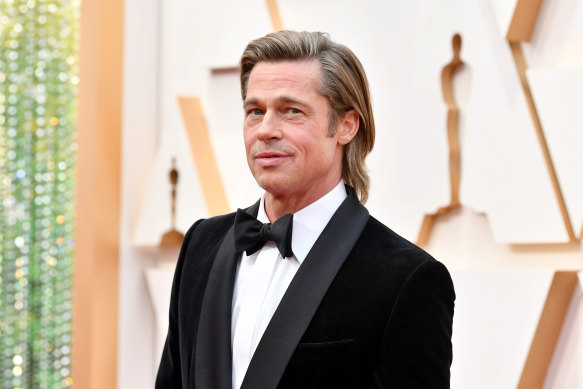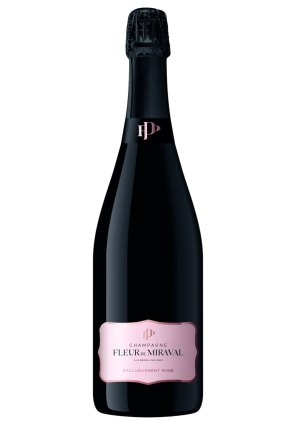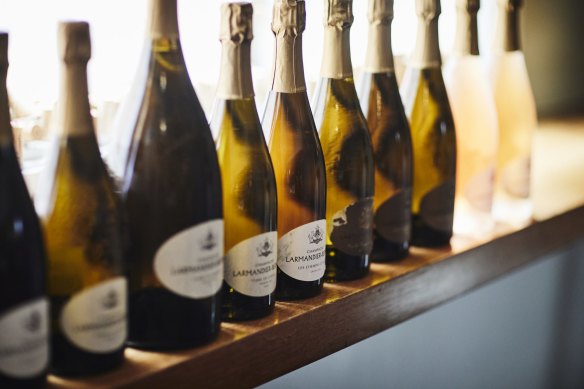Champagne is outperforming gold and Wall Street. Here’s what to buy
By Elin McCoy
To celebrate romance or toast a great performance, pop open the champagne, of course. That’s why the 95th Academy Awards featured Brad Pitt’s pink bubbly Fleur de Miraval. But today, along with their sex appeal, the finest bottles also pour out heady investment returns. And as the market bubbled ever higher in 2021 and 2022, speculators pounced.

Here are the kinds of numbers that stirred them up: from January to September 2022, a case of all-chardonnay 2012 Salon Le Mesnil soared 232 per cent, from £3800 to £12,600 ($US4670 to $US15,485), according to Liv-Ex, the London International Vintners Exchange. The Liv-Ex champagne 50 Index, which tracks the price performance for recent vintages of a dozen top brands, was a runaway star, outperforming gold, the FTSE, and the S&P 500, as well as the Bordeaux First Growths and even Burgundy.
Keep in mind that a decade ago the world’s finest bubbly accounted for a mere 2 per cent of secondary market trades on Liv-Ex. That share climbed to make it the third most-traded region behind Bordeaux and Burgundy (at 18.7 per cent) in November 2022, and remained in third position until US wines surged during the week of March 17 to 23.
When prices started cooling late last November and trended downwards in early 2023, my big question was: is champagne’s bull run over?

No, insists Tom Gearing, chief executive officer of Cult Wines, a UK-based fine wine investment company. He’s positive but cautious about the champagne market for 2023, citing continued strong global demand, as well as the region’s serious brand power and wide distribution. Vintage bottlings offer rarity, exclusivity, ageing potential and a good track record during economic downturns. Lower production in 2021 and 2022 tightened supply, with some top houses running out last fall.
And prices remain high at auction, as Charles Curtis, founder of wine advisory service WineAlpha and author of Vintage Champagne: 1899–2019, reminded me at lunch over glasses of Burgundy’s great Domaine de la Romanee-Conti. Several of Curtis’s clients bid the high estimates listed in recent auction catalogues and still lost out because the bottles sold for much more.
Jamie Ritchie, worldwide chairman of wine and spirits for Sotheby’s, says interest in champagne has been escalating over the past decade, including in Hong Kong, Singapore and Taiwan. The amount of champagne lots in their sales, he says, is growing big-time. Its “Ethereal Cellar” auction in Hong Kong on April 2 will include 82 lots of rare Krug vintages and 60 of Dom Perignon. White Plains, New York-based Zachys’ March auction featured 156 lots of champagne.
This kind of auction fever wasn’t always so.
According to Liv-Ex’s Robbie Stevens, broad interest in champagne investing started a few years ago when buyers began to realise how undervalued great examples were compared with the best Bordeaux and Burgundy. “One catalyst was the release of the extraordinary 2008 vintage,” he says, “and then the slew of great vintages that have followed — 2012, 2013 and 2014.” Investors got excited, then looked back to stock up on earlier vintages.

Credit:Kristoffer Paulsen
Another driver of demand may be anxiety over how global warming will affect the quality and style of future vintages. In other words, better buy now, just in case.
Gearing adds in yet another reason to have faith in champagne’s continued investment potential: it remains an icon of luxury in a world where there’s been an explosion of wealth. Despite COVID, the war in Ukraine, inflation and looming recession, luxury goods boomed last year and the 2022 edition of the Bain & Company-Altagamma Luxury study predicted even further growth in 2023.
What to invest in
Most champagnes are blends of wine from several vintages, but for the best return on investment go for more limited vintage champagnes. Produced only in the best years, they’re aged longer before release, and prices consistently go up with age. After all, supply dwindles as drinkers celebrate.
It used to be that only a handful of famous grands marques, such as Louis Roederer Cristal and Dom Perignon, were investment-grade brands. Now the pool has widened to include grower champagnes with high-profile reputations. (These are made by small estates who grow their own grapes.) The cult label Jacques Selosse, for example, is smoking. The cost of the 2008 has more than doubled since it was released only a few years ago.
Champagne remains an icon of luxury in a world where there’s been an explosion of wealth.
While Curtis still advises his clients to focus on major grands marques like Krug, Cult Wines includes both categories in its portfolio. Gearing says prices for super-premium names such as Salon could be levelling out.
He sees increasing interest in better-value grands marques such as Rare Brut and in the undervalued but excellent 2006 vintage (15 per cent to 40 per cent cheaper than the stunning 2008), as well as “an upward trajectory” for grower labels that have “phenomenal quality and brand momentum.” Cult Wines’ best performer among grower picks last year was 2012 Cedric Bouchard Les Ursules Blanc de Noir, up 332 per cent over the past five years.
Rose champagne, which is rarer than white cuvees, commands a premium. Liv-Ex reports that prices for examples from the superlative 2008 vintage on average are 96 per cent higher for the six most-traded houses. Rarity also drives higher prices for extra-large formats such as jeroboams and methuselahs.
Not surprisingly, companies such as Francois Pinault’s Artemis Group, owners of Bordeaux first growth Chateau Latour, have started investing in the region. In 2022, Artemis acquired Jacquesson. Expect it to gain more visibility and prominence in the future.
Based on recommendations from Cult Wines, Charles Curtis and Vinovest, here are eight champagnes to consider buying. As you can see by my tasting notes, none will disappoint.
Most Viewed in Business
Source: Thanks smh.com